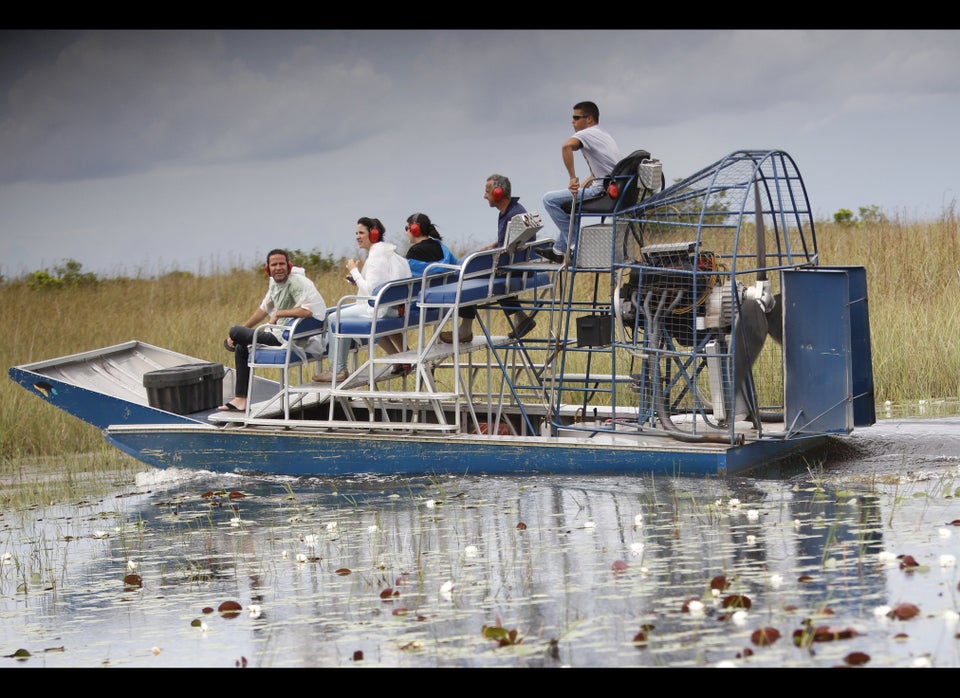Raising low-lying roads. Building higher seawalls. Strapping on more solar panels.
The threat of rising seas has more South Florida officials shifting from "What if?" to "What do we do?" when it comes to dealing with climate change.
South Florida scientists, government officials, representatives from Palm Beach, Broward, Miami-Dade and Monroe counties and environmental leaders converged on Palm Beach County Thursday to coordinate their fight against climate change.
Scary as the potential repercussions of climate change -- and the potential public costs -- may be, officials said the time has come to take action.
"Our responsibility as local government is to protect our citizens," Palm Beach County Commission Chairman Steven Abrams told the attendees of the two-day summit, which wraps up Friday. "We have to be prepared and realistic [about] the potential risks and the potential costs."
From the eroded Jupiter beach just steps from the group's meeting room to a section of State Road A1A in Fort Lauderdale recently eaten away by waves, South Florida officials say they are already dealing with the consequences of climate change.
Even if climate change isn't to blame for the increased local erosion that followed Hurricane Sandy, rising sea levels and expectations for intensified future storms is already affecting the decisions about how to reconstruct roads and shoreline.
In Fort Lauderdale, that could mean adding protective beach dunes and building A1A on higher ground than before, said Susanne Torriente, Fort Lauderdale's assistant city manager who is on the team that helped craft the plan.
"We can't close our eyes to what is happening with this extreme weather," Torriente said. "We want to build and we want to adapt to what's happening in our world."
Weather experts say climate change is amplified by man-made pollution from burning fossil fuels, which produces more carbon dioxide and other greenhouse gases that capture the sun's heat. That melts ice sheets and swells oceans, projected to boost rising sea levels.
South Florida sea levels rose about 8 inches during the past century, but are projected to increase as much as 1 foot as early as 2040 and could go up 2 feet by 2060, according to scientific projections.
The potential threats include more flooding, more saltwater seeping in and fouling drinking water supplies, and stronger, more frequent hurricanes.
The southeast Florida climate change plan, finalized this year, seeks to help local communities take a regional approach to preparing for everything from sea level rise to protecting drinking water supplies.
Building elevated roads, imposing tougher development regulations for particularly vulnerable areas, moving drinking water wellfields farther inland, broadening the use of public transportation and encouraging the use of solar power and other green energies are among the recommendations.
Raising seawalls, adding pumps, storing more stormwater to supplement drinking water supplies, planting more trees in urban areas and protecting more farmland and remaining open spaces from development are also among the goals.
"There are investments we can be making to reduce [climate change] vulnerabilities," said Jennifer Jurado, Broward County's director of Natural Resources Planning and Management, who helped create the plan.
Broward and Monroe counties have already approved the plan, with Palm Beach and Miami-Dade expected to take it up after the first of the year. Next comes pushing for a host of South Florida cities to officially sign on to what supporters say could become a model for other parts of the country.
The cost to taxpayers for implementing the host of recommendations remains a significant hurdle, as well as coordinating the efforts of county and municipal governments that don't always get along.
No region in the country has tried to tackle climate change on the same scale as what the four South Florida counties propose, according to Ron Sims, former deputy secretary of the U.S. Department of Housing and Urban Development.
"The issue is whether or not our children and our grandchildren and their children's world will be better than our own," Sims told the South Florida representatives during his keynote speech Thursday. "If you can't do it, it won't get done."
The fear and uncertainty over climate change needs to give way to action, according to Sam Merrill, of Catalysis Adaptation Partners, consulting firm that specializes in planning for sea level rise
"Sandy has shown us something," Merrill said. "This is politics free ... We are all getting wet together."
abreid@tribune.com, 561-228-5504 or Twitter@abreidnews ___
(c)2012 the Sun Sentinel (Fort Lauderdale, Fla.)
Visit the Sun Sentinel (Fort Lauderdale, Fla.) at www.sun-sentinel.com
Distributed by MCT Information Services
